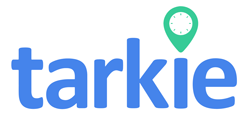Ever thought about how automating salary calculation could boost your small business payroll? As the business world changes, many small and medium enterprises (SMEs) in the Philippines are seeing big benefits from payroll automation. With 67% of medium and large companies already enjoying the perks, it’s time for SMEs to jump on the bandwagon.
Automating salary calculations enhances efficiency and reduces stress. It can decrease manual work by up to 80% and payroll errors by approximately 31%. Small and medium-sized enterprises (SMEs) may save significant time each month, allowing focus on more critical tasks. Automated systems also help maintain compliance with tax regulations, reducing the risk of fines and associated costs.
Exploring payroll automation reveals its power to change how small and medium businesses work. It leads to happier employees and better productivity. Ready to see how automation can improve your payroll?
Key Takeaways
- Automating payroll can reduce manual processing times by up to 80%.
- It decreases payroll errors by approximately 90%.
- Small businesses can save 5-10 hours per month on payroll tasks with automation.
- Payroll automation ensures compliance with IRS regulations, minimizing potential fines.
- Companies implementing automated payroll solutions experience increased employee satisfaction.
Understanding Payroll Automation
Payroll automation is a modern way to make employee payments easier. It gets rid of the hassle of doing math by hand. This lets businesses focus more on their work.
With special software, companies can make sure everyone gets paid right. This includes their wages, taxes, and any deductions.
What is Payroll Automation?
Payroll automation makes paying employees simpler. It cuts down on mistakes and keeps up with tax laws. About 70% of small businesses make mistakes with manual payroll.
Using automation, these errors drop by half. Businesses also save 5% to 10% on payroll costs. It works well with accounting software, making things more accurate and efficient.
How Does It Work?
Automated payroll systems use technology for tracking hours, calculating pay, and sending out payments. Businesses can save a lot of time, up to 80%.
Switching to automation means spending less time on payroll. For a team of 25, it goes from 8 hours to 4. It also gives real-time labor cost insights, helping with future plans.
Payroll automation is a big win for small and medium businesses. More than half of small businesses plan to use it in the next two years. It’s key for staying ahead and keeping employees happy.
| Feature | Benefit |
|---|---|
| Accuracy | Reduces payroll errors by approx. 50% |
| Time Savings | Save up to 80% time on payroll processing |
| Cost Efficiency | 5% to 10% savings on payroll processing costs |
| Real-time Insights | Better decision-making regarding labor costs |
| Integration | Works seamlessly with existing accounting software |
Benefits of Automating Salary Calculation
Automating salary calculation brings many benefits to small businesses. It makes payroll more accurate and saves time. Many companies are moving to payroll automation to improve their processes and cut down on errors and costs.
Enhanced Accuracy and Reduced Errors
Payroll software for small businesses greatly cuts down on mistakes. Manual payroll can lead to errors like typos and wrong numbers. These mistakes can cause financial problems.
Salary automation helps avoid these issues, making sure payroll is done right and follows tax laws. Businesses that use automation save about 90% of their payroll processing time. This makes their operations more efficient. Also, 80% of small and medium businesses see a big improvement in efficiency after using automation.
Using time-saving software lets businesses focus more on HR and employee growth. This is important for their success.
Time Savings for HR Teams
Payroll automation not only makes payroll more accurate but also saves HR teams a lot of time. Businesses can save about 10 hours per payroll cycle with automated systems. This lets HR teams work on more important tasks.
For more on making processes smoother, check out the benefits of integrating payroll systems with timekeeping software. Also, automating payroll makes businesses 50% less likely to face tax compliance issues. This helps their finances and makes employees happier.

How Automation Improves Small Business Payroll Efficiency
Payroll automation is a big help for small businesses. It makes processes smoother and helps follow rules better. With technology, things get faster and safer. This is key in a world full of rules.
A good payroll system makes things easier. It helps a lot.
Streamlined Processes and Better Compliance
Tools like Rippling cut down payroll time by up to 80%. They make tax calculations right, cutting down on fines by 50%. Reports are ready in seconds, not days.
This cuts down on mistakes. About 30% of errors come from people making mistakes.
Employee Self-Service Portals
Employee portals let workers check their pay info. They can update it themselves. This makes them happier.
Getting paid on time makes workers 25% happier. This makes the workplace better. An online salary calculator helps them see what they’ll make.
| Benefit | Manual Process | Automated Process |
|---|---|---|
| Time Spent on Payroll | Days of labor from multiple employees | Processed in hours |
| Human Error Rate | 30% of payroll mistakes | Nearly eliminated with automation |
| Compliance-Related Penalties | Higher risk | Reduced by up to 50% |
| Employee Satisfaction | Lower due to errors | Increased by 25% with accuracy |
Key Features of Payroll Processing Software
Payroll processing software is key for businesses wanting to make payroll easier. It helps automate salary calculations accurately. This way, companies can work better and avoid mistakes found in old payroll systems.
Real-time Data and Reporting
Real-time data tracking is a top feature of good payroll software. It lets businesses watch important payroll numbers as they happen. This means salaries are always up to date and correct.
Strong reporting tools help teams make better decisions. Studies show 75% of HR and finance teams get valuable insights from these tools. Payroll reports also help spot trends and keep up with laws, avoiding fines and errors.
Integration with Other Business Systems
Being able to connect with other systems is vital for smooth business work. Payroll software that works well with HR and accounting apps cuts down on manual work. This reduces mistakes and keeps employee data the same everywhere.
Companies using these integrations see big improvements. Almost 68% say their payroll is more accurate with these setups.

Choosing the Right Payroll Automation Tools
When picking payroll automation tools, first figure out what your business needs. Small and medium businesses should think about their employee count, how often they pay, and if they need to connect with current systems. A solution that fits these needs will work better.
Identifying Your Business Needs
The best payroll software matches your business’s specific needs. Think about if your business will grow, as 50% do in two years. Also, consider how much automation you want; companies with lots of automation see a 40% drop in mistakes.
Look for tools with customizable dashboards, automated reports, and self-service options. Tools that work well with time and attendance systems help automate more, making work easier for HR.
Cost Considerations
When evaluating costs, it’s important to consider both the initial investment and long-term savings. Payroll software typically costs between $20 (₱1,120) and $200 (₱11,200) per month, depending on features and the number of employees. Automating payroll can significantly reduce processing time, with some businesses experiencing up to a 50% reduction.
This time saved is key, like in hospitality where being efficient boosts profits. Even though there’s a cost upfront, the savings from fewer errors and fines can add up over time.
Salary Calculation: Automation Benefits for SMEs
Small and medium enterprises (SMEs) face growing challenges in salary calculation. Automation is a key solution, making payroll easier and helping SMEs grow. It lets businesses adjust to payroll needs and use resources better.
Scalability for Growing Businesses
Payroll automation is crucial for businesses that are growing. Managing salaries gets more complex as companies get bigger. Automated systems make these changes easier, allowing SMEs to handle more employees and different pay structures well.
Studies show automating payroll can save SMEs up to 40% in labor costs. This makes it a smart financial choice.
Data Security Considerations
Data security is vital for businesses handling sensitive employee info. Automated payroll systems have strong security features like encryption. This lowers the risk of data breaches and keeps businesses in line with data protection laws.
Research also shows automated systems improve salary accuracy. They cut down payroll errors by up to 90% compared to manual methods.

| Feature | Manual Payroll Processing | Automated Payroll Systems |
|---|---|---|
| Time Spent on Payroll | Up to 80% more time | Reduce time significantly |
| Labor Cost Savings | N/A | Save up to 40% |
| Error Rate in Payroll | Approximately 25% | Reduced likelihood of errors |
| Compliance with Regulations | High risk of penalties | Reduced risk by up to 90% |
| Employee Self-Service Access | Limited | Available for easy access |
In conclusion, payroll automation simplifies salary calculation for SMEs and boosts data security. It makes HR tasks more efficient, helping the business grow and stay strong.
Real-life Examples of Successful Implementation
Many small and medium enterprises (SMEs) in the Philippines have adopted payroll automation. They have seen great results. These stories show how automation can change HR operations for the better.
Case Studies from Philippine SMEs
A local retail business in the Philippines cut its admin costs by 30% after using payroll services. The HR team could now focus on bigger goals. The system made sure wages were right, making employees happier with their paychecks.
A tech firm also saw big savings with automated payroll. It cut costs by 49%. The HR team had more time for strategy, not just paperwork.
Positive Outcomes and Feedback
Employees at these companies felt a big change for the better. The system made payroll more accurate and cut down on legal risks. About 66% of HR managers said they could focus on bigger tasks, boosting productivity.
Feedback from clients showed the benefits of automated payroll. Employees trusted their employers more because of accurate pay. Also, 44% of companies with automated payroll had fewer than 2% errors, saving them from big mistakes.
Common Misconceptions About Payroll Automation
In the world of payroll, many small and medium businesses think automation is out of reach. They believe it’s only for big companies. But, the truth is, payroll automation is for all businesses, big or small.
Only Large Companies Need Automation
Many small and medium businesses think payroll is too hard. They think only big companies can use automation tools. But, these tools can really help small businesses too.
They make payroll more accurate and save a lot of time. Using payroll software can cut down processing time by up to 50%. This means small businesses can focus on what they do best.
Automation can also save small businesses up to 40% on payroll costs. This shows that even small businesses can benefit from using these tools.
Concerns About Data Security
Some businesses worry about keeping their data safe with automation tools. They think it might get hacked. But, the truth is, good payroll software has strong security.
It uses advanced encryption to protect your data. Plus, using these tools can reduce payroll errors by up to 30%. This makes your business more secure and compliant.

Implementing Your Payroll Management System
Switching to a payroll management system needs careful planning. Businesses should take a structured approach. This ensures a smooth transition with little disruption.
Steps for a Smooth Transition
Here are steps for a smooth payroll system implementation:
- Evaluate Business Needs: Find out what your payroll needs are to pick the right software.
- Choose the Right Software: Look for features like time tracking, direct deposits, and compliance management.
- Conduct Thorough Testing: Test the system with trial scenarios to find any issues.
- Plan Data Migration: Move your current employee payroll data to the new system safely.
- Implement Compliance Measures: Make sure you follow tax and labor laws.
Training Employees and Ensuring Adoption
Training employees is key to a successful payroll system adoption. Here are some strategies:
- Comprehensive Training Sessions: Teach employees how to use the new system well.
- Create Resource Materials: Make manuals and video tutorials for easy use.
- Encourage Employee Feedback: Talk to employees to solve problems and improve training.
- Ongoing Support: Offer help and troubleshooting to make employees confident with the system.
With good planning and training, businesses can save time, improve accuracy, and boost payroll efficiency.
Conclusion
Automating salary calculation is a game-changer for small and medium businesses in the Philippines. It helps them deal with complex rules and changing work styles. This makes payroll automation a must-have for staying ahead.
By using automated systems, businesses can cut down on mistakes and stay in line with the law. This can save them up to 30% of their costs. It’s a big win for any company.
Payroll automation also helps small business owners a lot. Over 70% say it’s a big help with payroll taxes. It makes their work easier and frees up time for growing their business.
It’s not just about saving money. It also makes employees happier because they get paid on time. This is a big plus for any business.
Now, payroll automation is not just a choice; it’s a must for businesses to stay competitive. It offers many benefits, like better reports and more efficient work. As businesses grow, using tools like payroll automation will help them succeed even more.
